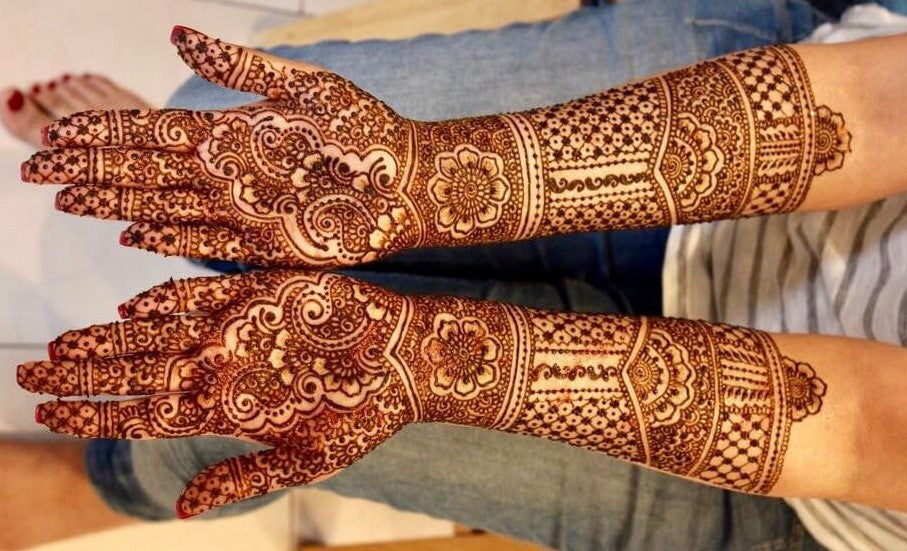Henna art, also known as mehndi, is a traditional form of body art that involves creating intricate designs on the skin using henna paste. Henna is a natural dye derived from the leaves of the henna plant, scientifically known as Lawsonia inermis. It has been used for centuries in various cultures and regions, primarily in South Asia, the Middle East, and North Africa.
Here are some key aspects of henna art:
-
History and Cultural Significance: Henna art has a rich history and cultural significance. It has been practiced for thousands of years and is deeply rooted in the traditions and celebrations of many cultures. Henna is commonly applied during weddings, festivals, religious ceremonies, and other auspicious occasions.
-
Henna Paste Preparation: Henna paste is created by grinding the dried leaves of the henna plant into a fine powder. The powder is then mixed with a liquid such as water, lemon juice, or tea, along with other natural ingredients like sugar, essential oils, or herbs. This mixture is left to sit for a few hours or overnight to allow the dye to release.
-
Application Process: Henna paste is applied to the skin using a cone-shaped applicator or a small brush. The artist creates intricate patterns and designs, which can range from traditional motifs to contemporary styles, depending on the individual's preferences and the cultural influences. The paste is left on the skin for several hours to allow the dye to stain the top layers of the skin.
-
Staining and Drying: As the henna paste dries, it leaves behind a reddish-brown stain on the skin. The longer the paste is left on, the darker and longer-lasting the stain will be. After the paste has dried, it is typically sealed using lemon juice or a sugar-water solution to help intensify the color and ensure longevity.
-
Duration and Fading: The intensity and longevity of the henna stain vary from person to person. The color initially appears bright orange and gradually darkens to a reddish-brown shade over the next 24-48 hours. The stain typically lasts for one to three weeks, depending on factors such as skin type, location of the design, and aftercare practices. The stain gradually fades as the skin naturally exfoliates.
-
Symbolism and Designs: Henna designs often incorporate intricate patterns, symbols, and motifs that hold cultural and symbolic meanings. Common elements include flowers, leaves, paisleys, peacocks, geometric shapes, and religious symbols. These designs can convey messages of beauty, prosperity, protection, blessings, and other sentiments depending on the cultural context.
-
Aftercare: Proper aftercare is essential to ensure a dark and long-lasting henna stain. After the paste has dried, it is recommended to avoid water contact for at least 4-6 hours. It is also advised to keep the design moisturized by applying a natural oil or balm to the area. Avoiding harsh soaps, excessive rubbing, and exposure to chlorine or chemicals will help preserve the design.
Henna art is not only a beautiful form of body adornment but also carries cultural, social, and festive significance in many communities. It celebrates traditions, rituals, and special occasions while showcasing the artist's creativity and skill. Whether it's for personal expression or cultural appreciation, henna art continues to captivate people around the world.
Image source: https://blog.ipleaders.in/henna-artists-need-know-copyright/

